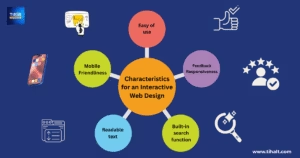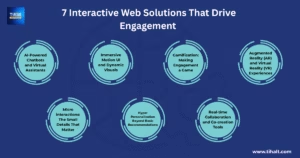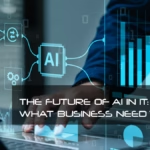The digital landscape is constantly evolving, and in 2025, simply having a website isn’t enough. To truly capture attention and convert visitors into loyal customers, you need to offer an experience. This is where Interactive Web Solutions comes into play, transforming passive browsing into dynamic, memorable journeys. Imagine a website that anticipates your needs, entertains you, and makes you feel like an active participant rather than a mere observer.
Gone are the days of static pages and one-way communication. Today’s users expect more. They crave interaction, personalization, and instant gratification. Businesses that embrace these cutting-edge web design trends of 2025 will thrive, building stronger connections and fostering deeper engagement. Let’s dive into the top interactive web solutions that are setting the standard for user experience this year.
-
AI-Powered Chatbots and Virtual Assistants
Remember the clunky chatbots of yesterday? Forget them. In 2025, AI-powered chatbots and virtual assistants are sophisticated user engagement tools that offer personalized, instant support 24/7. They don’t just answer FAQs; they can guide users through complex processes, offer product recommendations based on browsing history, and even handle basic customer service inquiries with a human-like touch.
- Example: Many e-commerce sites now use AI chatbots that can help you find the perfect outfit by asking a series of style preference questions, much like a personal shopper.
-
Immersive Motion UI and Dynamic Visuals
First impressions matter, and dynamic visuals powered by Motion UI (User Interface) create an unforgettable one. This solution involves animated elements, smooth transitions, and captivating visual effects that respond to user actions. It’s about creating a living, breathing website that guides the eye and adds a layer of sophistication to the user experience.
- Example: A portfolio website for a graphic designer might use subtle parallax scrolling and animated reveals for their projects, making the content feel alive as you scroll.
-
Gamification: Making Engagement a Game
Who doesn’t love a fantastic game? Gamification integrates game-like elements into non-game contexts to encourage participation and loyalty. Think points, badges, leaderboards, and challenges. These interactive website features tap into our natural desire for achievement and competition, making mundane tasks fun and rewarding.
- Example: Loyalty programs that reward users with points for purchases or sharing content, or learning platforms that use quizzes and progress bars to motivate students.
-
Augmented Reality (AR) and Virtual Reality (VR) Experiences
AR and VR are no longer just for gaming; they are powerful interactive web solutions transforming how users interact with products and services online. AR overlays digital information onto the real world, while VR creates entirely immersive digital environments. These technologies offer unparalleled opportunities for engagement and product visualization.
- Example: Furniture retailers like IKEA allow you to virtually place furniture in your home using AR, while real estate companies offer VR tours of properties, letting you explore them as if you were there.
-
Micro-interactions: The Small Details That Matter
Often overlooked, micro-interactions are subtle, single-purpose animations or feedback mechanisms that occur when a user performs a specific action. Think about the “like” animation on social media, the subtle bounce of a button when you click it, or the sound effect when you send a message. These small but mighty interactive website features enhance usability, provide feedback, and add personality to your site.
- Example: The satisfying “ding” sound when your online order is confirmed, or the visual feedback when you successfully drag and drop an item into a cart.
-
Hyper-Personalization Beyond Basic Recommendations
Moving beyond basic “you might also like” suggestions, hyper-personalization leverages AI and data analytics to deliver truly tailored content and experiences. This means websites that adapt their layout, content, and offerings based on individual user behaviour, preferences, and even emotional responses. It’s about creating a one-to-one digital conversation.
- Example: News websites that curate article feeds based on your reading history and stated interests, or e-commerce sites that dynamically adjust product displays to match your personal style.
-
Real-time Collaboration and Co-creation Tools
In an increasingly connected world, facilitating real-time collaboration directly on your website is a game-changer. These Interactive Web Solutions allow multiple users to interact with content simultaneously, whether it’s editing a document, brainstorming ideas on a digital whiteboard, or customizing a product together.
Example: Online design tools that let multiple users work on the same graphic simultaneously or website builders that allow clients and designers to collaborate on mock-ups in real time.
Elevate Your Digital Presence
The future of web design is undeniably interactive. By embracing these cutting-edge Interactive Web Solutions, you’re not just keeping up with web design trends in 2025; you’re actively shaping a more engaging, personalized, and memorable online experience for your audience. These user engagement tools are vital for fostering loyalty, reducing bounce rates, and ultimately, driving conversions.
Don’t let your website be a static billboard in a dynamic world. It’s time to transform it into an immersive destination. Ready to elevate your website’s engagement and stand out from the crowd? Contact us today to explore how these interactive website features can revolutionize your digital strategy and captivate your audience like never before!















